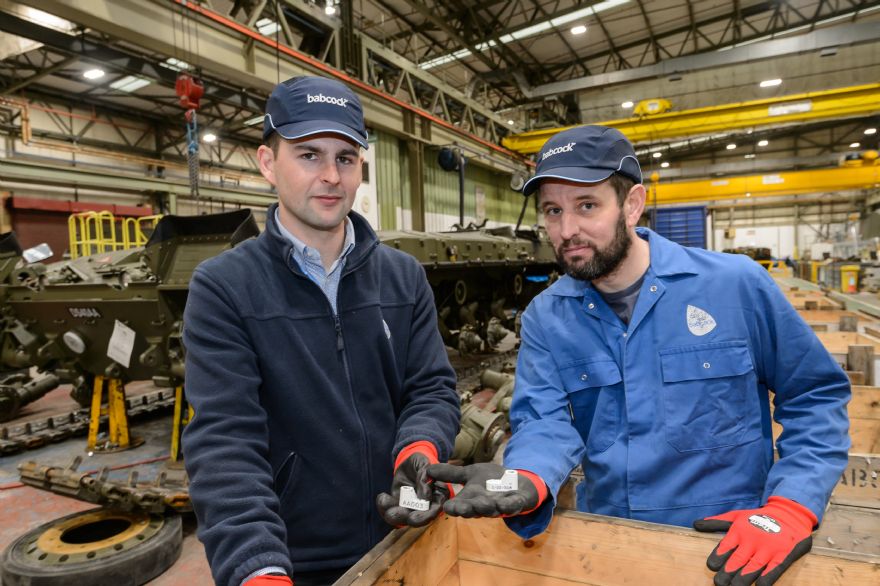 Photo: Babcock
Photo: BabcockThe first 3-D metal printed parts to be used across the British Army’s active armoured fleets have been manufactured and fitted by defence company,
Babcock International Group. The steel components are believed to be the first made in this way by any supplier to the Ministry of Defence (MoD) specifically to tackle the growing challenges of technical and commercial obsolescence.
The significant milestone is part of a longer-term global advanced manufacturing (AM) investment programme by Babcock, which is developing a capability that could see parts 3-D printed anywhere in the world as and when the point of need arises. This could include seeing 3-D printers onboard vessels at sea or at military sites abroad. Fitted onto in-service Titan and Trojan vehicles, the parts form part of the periscope system to ensure Army crews have visibility of their immediate surroundings.
Tom Newman, Babcock Land CEO, said: “This investment in technology allows us to support our customers in a completely different way, at home and deployed on operations. If a component is required and cannot be sourced, we can now find a way to make it. As we look to the future of equipment support, AM has significant implications for our customers, and I am delighted Babcock is leading the way in developing this capability.”
Major milestoneDr Richard Drake, Babcock’s chief technology officer, said: “This marks a major milestone in finding solutions for obsolete parts and in tackling resilience in the supply chain — some of the biggest challenges engineering and manufacturing businesses like ours are facing. We are using disruptive technologies to address that. For us, this is part of a growing investment programme around advanced and AM, which we can now progress to other areas of our business and that is hugely exciting for Babcock.”
In February, Babcock launched a technology partnership with
Plymouth Science Park and unveiled a brand new innovation centre focused on AM techniques. It now means the process to 3-D print parts that are obsolete or required in low quantity, such as the periscope clamp, can now be completed in days instead of months.
Digital solutions such as AM are becoming increasingly significant in the management of complex, critical, legacy, and low volume assets. 3-D printing parts in this way can also ensure companies that need to manufacture at scale can do so in a more sustainable way, using only materials at the point of need.
Dr Drake concluded: “We will not stop here. We are working towards a future where the 3-D printing techniques and processes we are putting into place now, will be readily available across any part of the MoD we support.”
Babcock is responsible for the fleet management of over 50,000 vehicles for the British Army ranging from quad bikes and generators to main battle tanks, and weapons from pistols to artillery.